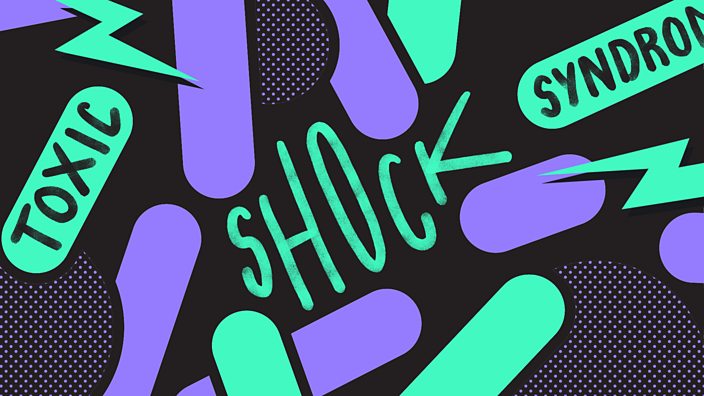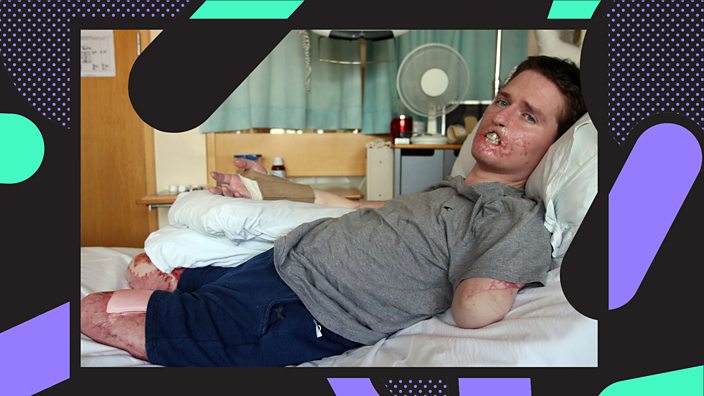 BBC Three
BBC Three'I nearly died from toxic shock syndrome and never used a tampon'
TSS can kill but it doesn't just affect people who menstruate - as these people found out
Anyone who got their first period in the ’90s had it drilled into them to never, ever, leave a tampon in overnight. Horror stories were circulating in the media about a terrifying-sounding bacterial infection called toxic shock syndrome (TSS), which can result in the mass shedding of skin, hair loss, amputation of limbs and even, in extreme cases, death.
TSS is caused by either Staphylococcus or Streptococcus (also known as Strep A) bacteria which live harmlessly on the skin, nose or mouth but can do damage if they enter the bloodstream and release toxins.
Your risk of catching it increases if you have an open wound like a cut or a burn, use female barrier contraceptives, catch certain throat or skin infections or if a tampon is left in longer than recommended, giving harmful bacteria more time to flourish.
It's suggested that incidents of TSS peaked in the UK in the early 90s, with roughly 40 cases per year, resulting in two to three deaths. In the US, where there was talk of a 'toxic shock crisis', cases peaked at more than 2,200 in 1983.
Since then, the number of cases has sharply reduced, partly due to changes in tampon manufacture. As a result, news of the infection largely slipped out of the headlines and awareness of its causes and symptoms declined.
Then last December came the shocking news that American gymnast, Anna Norquist, 30, had contracted TSS and had tragically had all her limbs amputated. The twist in her story is that it wasn’t linked to tampon use.
Today, non-menstrual related TSS is actually more common in the UK than menstrual-related, which means it can also affect men and even children.
Here three people - none of whom contracted it via tampons - share their experiences of this incredibly rare infection.
Guidance: some upsetting content
“I had no idea men could get TSS”
 Alex Lewis / BBC Three
Alex Lewis / BBC ThreeAlex Lewis was 33 when he became ill in 2013. He’d “never heard of TSS and had no clue what it was”. Back then, Alex ran a busy pub and had a relatively active lifestyle.
But one day in November, he noticed something wasn’t right. “At first I just had flu-like symptoms, which was normal for the time of year, especially as my young son had a cold and people came in and out of the pub all the time coughing and sneezing.”
A couple of weeks later, Alex woke up in the night to go to the bathroom and noticed blood in his urine. “That’s when I knew something might be really wrong,” he recalls.
“When I woke up in the morning, my wife had already left with our little boy. I was home alone. I was only semi-conscious and could hardly move.”
Alex remembers parts of his skin turning purple, but he didn’t know why. “My wife came home and took one look at me and called the paramedics.”
Alex deteriorated rapidly. “I went from feeling rough to being on life support within 24 hours”.
When Alex first arrived at the hospital, nobody knew what was wrong. Initially, he was diagnosed with Weil’s disease – a rare infection usually caught from rats.
“It wasn’t until a doctor, who’d previously seen a case of TSS in South Africa, observed me and recognised the symptoms, that I was diagnosed with Strep A.”
Doctors shut down Alex’s internal organs to prevent the infection attacking them, giving him a 3% chance of survival. Incredibly, he defied the odds and within days, came round from the coma.
“We assumed that because I was awake, the worst was over,” he says.
They were wrong. The infection had spread toxins throughout his body. And it was killing him.
A plastic surgeon came to see him. “She greeted me and in a matter-of-fact manner told me my left arm would be amputated above the elbow and both my feet but they thought they could save my lower legs. Then she was gone.”
Alex, of course, freaked out. “I couldn’t believe what I was being told, my first instinct was to think, ‘I’m not having that done!’”
Overnight Alex was sedated. The next day, he realised how much he wanted to live. “And the amputations were necessary for my survival. So, we bit the bullet and got on with it.”
Alex had all four limbs amputated. He has vivid memories of waking up just after he lost his legs. “The pain was horrific,” he says. But the biggest blow was yet to come.
The surgeons announced they had to amputate half his face, including his lips.
 Alex Lewis / BBC Three
Alex Lewis / BBC ThreeAlex’s mouth was reduced to the size of a 5p coin. It made breathing, talking and eating incredibly difficult. And it also affected what he saw in the mirror and his interactions with his family.
“Before I fell ill, I spent so much time with my son. Our bond was really strong. But after all the amputations, he was scared of me. It took a long time to reconnect.”
Alex has since set up a charity to raise awareness and help others deal with TSS.
Men, especially, he says, shouldn’t leave it until the last minute to take medical advice. “We can be particularly bad at going to the doctors when things aren’t right,” he adds. “But it’s essential you know what to look out for – going to the doctors early could make the world of difference."
“I caught TSS from my coil”
Just hours before being admitted to hospital, Cecelia, then 21, was enjoying herself at a mate’s birthday party. When she got home she describes feeling cold, which she attributed to wearing a crop top at night, so decided to have a warm shower.
But the longer she stayed in the shower, the colder she felt. Cecelia became weaker and more nauseous. It all happened really fast and she realised she needed to go to the hospital.
When she got to A&E, doctors first gave her a 20% chance of survival. She was “puking, convulsing and becoming delirious from my fever of 104 degrees and going into septic shock." Just hours before she was "running, swimming, and having a perfectly great and normal time at a party".
“I had all the tell-tale signs of toxic shock syndrome – a stinging sunburn-like rash. Apparently, most people get it all over their body but mine was between my thighs, groin/genital area (yes, 'down there'), on the soles of my feet and my palms of my hands."
"Eventually, the rash stopped hurting and my skin started peeling off painlessly. The bottoms of my feet peeled off in huge sheets of dead skin.”
But it wasn’t until the end of her five-day stay in hospital, that a diagnosis of TSS was confirmed.
The clue was in a urine culture in her bladder, from an untreated urinary tract infection. “The specialist told me he believed the bacteria from my bladder migrated to my IUD (contraceptive coil) and infected it, which caused the Toxic Shock Syndrome”.
Even now, three years later, Cecelia still suffers from anxiety and fatigue.
“I’m lucky to be alive. The whole experience of being in hospital was terrifying. I’ve worked hard to recover both physically and mentally but it’s been tough.”
“My daughter got TSS aged seven”
Gabby, age seven, had never even seen a tampon when she contracted TSS in August last year.
“It began with an impetigo infection,” says Gabby’s mum, Christine, 34. “It was only a small spot that we didn’t realise was actually deep within the skin. Her skin was agonisingly itchy and she would hysterically scream.”
 Contributor / BBC Three
Contributor / BBC ThreeChristine describes Gabby’s symptoms as what looked like severe sunburn in numerous places. Under her arms, on the soles of her feet and flaking lesions all over her face.
“After numerous diagnosis from tree nut allergy to scarlet fever, Gabby was transferred via ambulance to the burns unit of the local children's hospital because her skin was literally burning and no one could figure out why."
It took almost two weeks for a final diagnosis of toxic shock syndrome.
Five months later, Gabby is still struggling with the side-effects: “She has bad leg cramps and her skin is now extremely sensitive to sun and heat. She lost a lot of hair which is only now starting to grow back,” says Christine.
"She also missed the first month of school. She still feels behind academically and has struggled to make friends. She also was scared to return to school while her skin was still peeling, as she didn’t want anyone to see her.
"She was so afraid at so many points along the way. Her stepdad and I are both helping build her confidence and love her body again. But she gets frightened when she gets sick, which is frequently now because her immune system is struggling.
"We are constantly worried about her emotional state."
Toxic shock syndrome can affect anyone of any age. The main symptoms to look out for are: a high temperature, sickness and diarrhoea, a sunburn-like rash and flu-like symptoms such as headaches, muscle aches and chills.
Although TSS is very rare, if you feel you may be suffering, NHS advice is to seek medical attention immediately.
Originally 7 February 2019.











